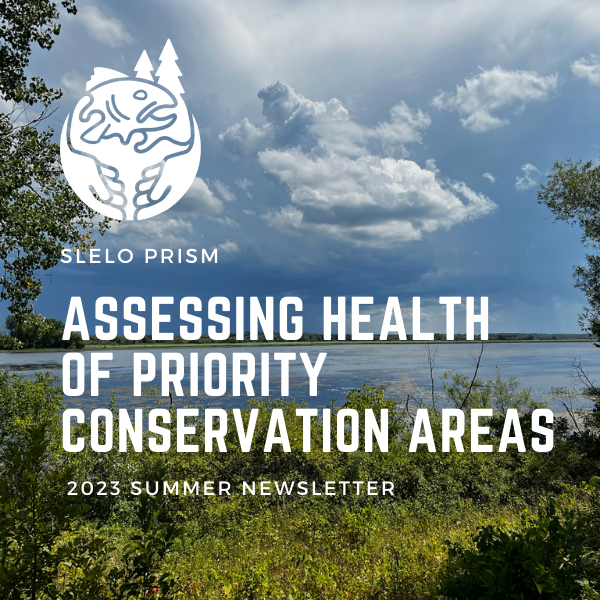This article was featured in the 2023 summer newsletter by Rob Williams, SLELO PRISM Director.
Is the health of our Priority Conservation Areas (PCAs) improving, maintaining, or worsening as a result of our invasive species management strategies and restoration activities? Answering this important question first requires a benchmark. To achieve this, the SLELO PRISM continues to develop scorecards for each PCA, and to date, approximately half of our PCAs have been benchmarked.
The first step in the process is to describe the PCA and become oriented with the natural characteristics of the PCA. We describe the acreage, habitat types, terrestrial and aquatic, we map it and if available we mark the boundary and describe the Highly Probable Areas or HPA’s where invasives are most likely to occur. We then use The Nature Conservancy’s resilient and connected network (or RCN) database that identifies where plant and animals have the best chance to adapt in a changing climate. This compares a sites resilience, connectedness and landscape diversity. We also look at the sources and quantities of carbon stored at the PCA. For example, one of our PCA’s (Lakeview WMA) we estimate over 155 metric tons of stored carbon which is equivalent to CO2 emissions from 64 million gallons of gasoline consumed or 629 million pounds of coal burned.
Next using multiple sources including work by New York’s Natural Heritage Program, we look at native species communities and their state ranking which reflects their rarity. We then insert our invasive species abundance and management knowledge and we do this for both aquatic and terrestrial invasive species. By comparing resiliency, connectedness and diversity with invasive species extent or density the total score is the average (RCD+IS).
Example: Lakeview Wildlife Management Area PCA
RCD Score (1.18 + 1.08 + 1.35) = 1.20 = A (95)
IS Density Score (s) – A (95)
Yellow Iris – A (95) & Swallow-wort – A (95)
TOTAL Score = (95+95) /2 = 95 = A
The scorer can then add a positive or negative to the score based on successful ecological restoration activities taking place at the PCA. This is known as Discretionary Restoration Adjustment or DRA. The overall score then becomes: A+.

Outputs
If target invasives are being reduced then forest health, carbon and biodiversity are presumably sustained. If new invasive species (IS), such as an insect, enter the system or if the abundance of an invasive plant increases, then the site might be “regressing”. If IS are reducing, there are no new introductions and native species continue to thrive, then the PCA is likely to be improving. This becomes our (Health Profile or Benchmark Score). At Lakeview PCA we are now seeing after 11 years of treatment – a 33% reduction in the extent of sites managed for swallowwort, which indicates we are progressing in a favorable direction. To view completed scores go to: sleloinvasives.org—Field Reports—Select a PCA—scroll down to PCA Score Card.


